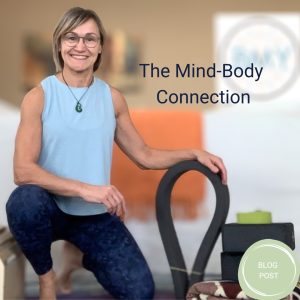Living in Alignment: How Values Guide a More Meaningful Life
At some point in life, many of us ask, “Am I really living the life I want to be living?” For women in midlife especially, this question often surfaces as roles shift, responsibilities change, and we begin to reflect more deeply on what truly matters. This is where values come in.
Values are not simply words on paper or ideals we admire from afar — they are the guiding principles that shape how we want to live, love, and engage with the world. They give us direction, even when life feels overwhelming or uncertain. In Acceptance and Commitment Therapy (ACT), values are seen as the compass that helps us move toward a meaningful life, no matter what challenges show up along the way.
Why Values Matter
When we are disconnected from our values, it’s easy to feel stuck, dissatisfied, or even burnt out. Aligning our actions with what we care about most, on the other hand, creates a sense of purpose and resilience. Values can help us:
- Make decisions that feel right, not just convenient.
- Prioritize what truly matters, rather than saying yes to everything.
- Stay grounded when obstacles and setbacks arise.
- Create lives that feel rich, connected, and meaningful.
The truth is, it’s not always easy to live in alignment with our values. Life’s demands, fears, and old habits often pull us off track. But by intentionally identifying and revisiting our values, we can keep choosing small steps that move us in the right direction.
Exploring Your Values
ACT offers practical tools for clarifying values and living them out. Here are a few simple but powerful exercises:
- Setting Valued Goals
Ask yourself: What do I consider most important in life? What gives my life meaning? What makes me feel fulfilled? From here, notice which life domains (relationships, health, career, spirituality, etc.) feel most significant to you. Then consider: What small goals could I set that bring these values to life in action? - Commitment, Obstacles, and Strategies
Choose one value and set a goal connected to it. For example, if you value connection, your goal might be spending more intentional time with loved ones. Next, consider: What might get in the way? (Perhaps time, fear of rejection, or self-doubt.) Finally, write down one or two strategies to overcome those barriers. This process helps transform values into action while acknowledging real-life challenges. - Writing Your Mission Statement
This is about bringing your values into focus with a personal declaration. Try filling in the blanks: I will do X, for Y, to achieve Z. For example: I will nurture safe, supportive relationships for myself and others, to create a life of connection and care.
Living Your Values Every Day
Values are not goals to “check off.” They are ongoing directions that guide how you want to show up, moment to moment. By asking, Am I acting in line with what matters to me right now? we can gently bring ourselves back into alignment.
And when life feels messy — as it so often does — values remind us that meaning can still be found. You don’t have to wait until everything is perfect to start living more fully.
Final Thoughts
Clarifying your values isn’t about adding more to your to-do list. It’s about permitting yourself to live more authentically — to choose actions that reflect who you truly are and what you want your life to stand for.
In midlife, this work is especially powerful. It’s a chance to pause, re-align, and create a life that feels nourishing and true. Values are not about striving for perfection — they’re about walking steadily in the direction of what matters most.










 Tip: Check out the wellness tracker. It’s a simple but powerful tool designed to help you remember the promises you make to yourself. As you complete wellness activities your tree will blossom, and so will you!
Tip: Check out the wellness tracker. It’s a simple but powerful tool designed to help you remember the promises you make to yourself. As you complete wellness activities your tree will blossom, and so will you!